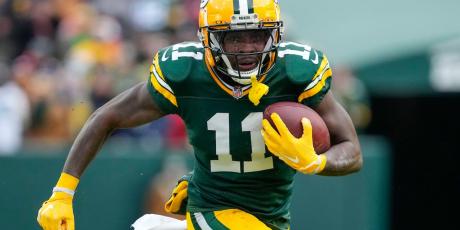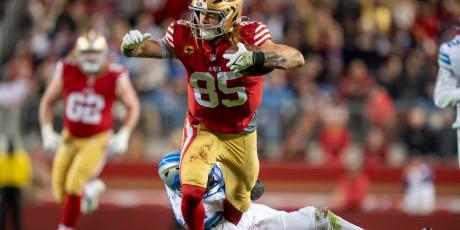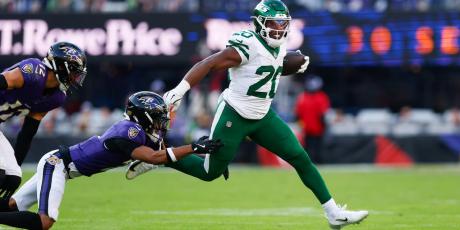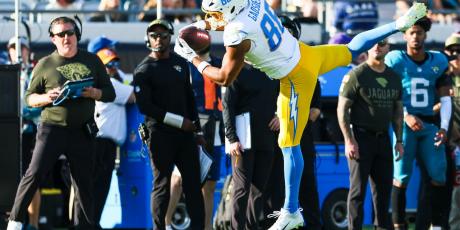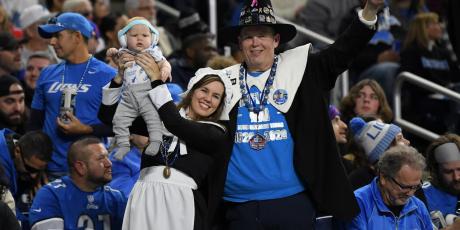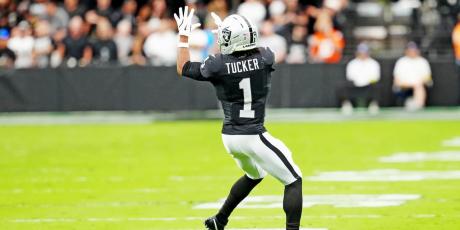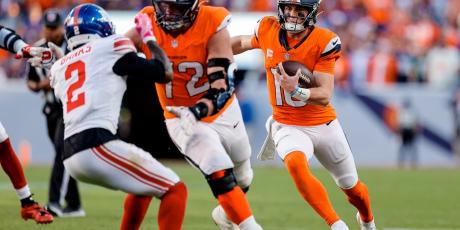Searching for Fantasy QB1 Performances
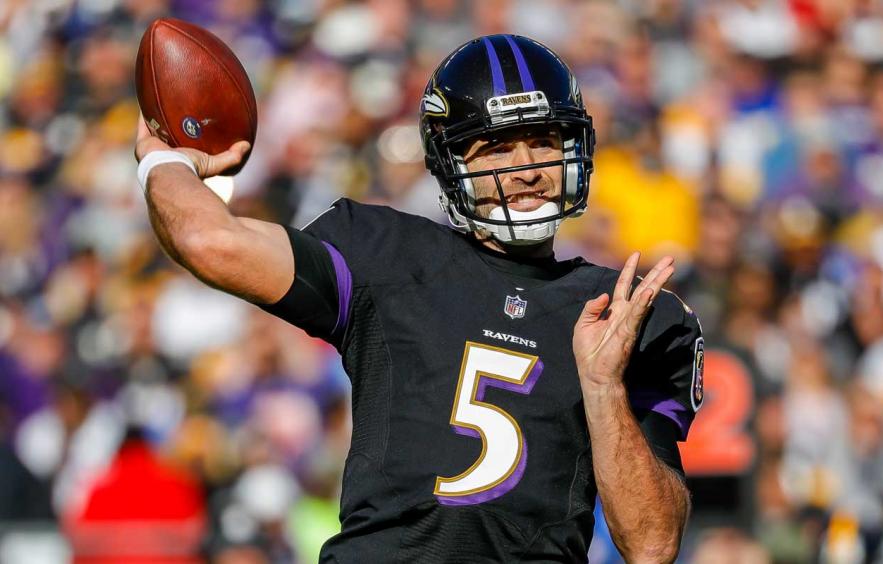
Quarterback streaming, it turns out, is something short of quantum physics. Understanding the nature of subatomic particles is at least slightly more taxing on the brain than spotting a favorable matchup for an NFL signal-caller.
I’ll concede this to the haters and losers.
Measuring quarterback streaming success has little to do with picking up passers who go hog-wild in a given week, outscoring all but a few quarterbacks. Streaming success lies in pinpointing widely available quarterbacks who post solid stat lines—numbers that put them (in a 12-team league) among the top-12, or QB1 territory. This, in short, makes the quarterback startable. Deploying a QB1 found on the waiver wire means you made a justifiable play. Congratulations. You managed not to defecate in your pants.
I thought it'd be instructive to examine the role of 4for4's schedule-adjusted fantasy points allowed metric (aFPA) in identifying and exploiting defenses allowing plenty of QB1 performances. To put it another way: How does a tool based on the (correct) premise that giving up 20 fantasy points to Tom Brady is not the same as allowing 20 points to Joe Flacco help us maximize quarterback production?
| Team | aFPA to QBs | QB1 Performances Allowed |
|---|---|---|
|
Browns |
19.4 |
10 |
|
Texans |
19 |
9 |
|
Jets |
18.3 |
9 |
|
Packers |
18 |
8 |
|
49ers |
17.8 |
9 |
|
Giants |
17.4 |
9 |
|
Patriots |
17.4 |
6 |
|
Raiders |
17.2 |
9 |
|
Colts |
17.1 |
8 |
|
Titans |
16.8 |
6 |
It’s true some teams in the above table gave up startable quarterback numbers in chunks—not every generous team proved exploitable throughout the 2017 season. New England, for example, allowed a stunning 21.8 fantasy points per game to enemy passers through the season’s first eight weeks. Quarterbacks averaged just 13.2 fantasy points per game against the Patriots during the season’s second half, including a meager two QB1 performances. In other words, the above numbers were not created equal.
But the bottom-six teams in aFPA given up to signal-callers—the Browns, Texans, Jets, Packers, Niners, and Giants—provided a hefty average of 7.33 QB1 outings. The best part: These defenses revealed themselves fairly early on as clear targets for fantasy footballers scouring the landscape for favorable quarterbacks conditions. The Browns, for instance, gave up four QB1 performances in the season’s first half, and six in the second half. The Jets allowed five QB1 stat lines in the first eight weeks and four in the final eight weeks. Many of these defenses were exploitable throughout the season.
The adjustment aspect in aFPA is more than apparent when we scan the list of quarterbacks who posted QB1 lines against the NFL’s worst pass defenses in 2017. It’s this tidbit that should pique the interest of anyone committed to exploiting quarterback matchups with guys six feet under the waiver wire.
Cleveland allowed a QB1 outing to Joe Flacco (who wasn’t a top-24 QB in 2017) and two QB1 lines to Andy Dalton—the overall QB17—who was otherwise hardly usable. Blaine Gabbert and Jacoby Brissett managed QB1 performances against Houston. The Colts gave up QB1 performances to the following legends: DeShone Kizer, Brian Hoyer, Dalton, Brock Osweiler, and Flacco. Trevor Siemian, who scored less than a dozen fantasy points in half of his 2017 starts, pulled out a QB1 performance against the Giants, as did Nick Foles. Perhaps that shouldn’t come as some great shock, as Foles, the GOAT slayer, is the reigning Super Bowl MVP.
Compare this data to raw fantasy points allowed by defenses in 2017 and you’ll notice the subtle but critical difference: Cleveland was sixth in raw fantasy points allowed to quarterbacks, not first, as they were in aFPA. The Giants, meanwhile, were first in raw points against but sixth in adjusted points given up.
Now we’ll take a look at the stingiest defenses against quarterbacks in 2017—the nightmare makers who offered passers not just a low ceiling, but a nearly non-existent fantasy floor.
| Team | aFPA to QBs | QB1 Performances Allowed |
|---|---|---|
|
Jaguars |
10.8 |
3 |
|
Vikings |
11.4 |
3 |
|
Ravens |
11.8 |
3 |
|
Chargers |
11.9 |
4 |
|
Bears |
12.5 |
4 |
|
Bills |
12.6 |
4 |
|
Rams |
13 |
4 |
|
Seahawks |
13.1 |
2 |
|
Washington |
14.1 |
7 |
|
Eagles |
14.6 |
7 |
A few quick notes: Jacksonville didn’t give up a single QB1 outing until Week 14. That’s stunning, and no one would deny that it might happen again in 2018, considering the team’s defensive prowess and its approach to winning games. While other elite defenses allowed QB1 performances in various parts of the 2017 campaign, the Jags shut down all comers until the final month of the season, when three quarterbacks managed QB1 stat lines against Jacksonville.
Note that some of these nightmare quarterback matchups were indeed spectacular matchups for enemy runners. Only two teams allowed more adjusted fantasy points to running backs than the Rams, while the Ravens gave up the sixth-most as teams seized leads against Baltimore and leaned heavily on the run game. Washington allowed the eighth-most adjusted points to runners. No team allowed more schedule-adjusted fantasy production to running backs than the Bills. The teams on the ugly side of the aFPA quarterback spectrum should never be discounted as tough-as-nails defenses that present horrific prospects for every position.
With so many viable quarterback plays every week in 10- and 12-team leagues—folks forget that QBs don’t matter in fake football—there’s hardly ever a reason to roll with a passer facing off against a defense allowing so little adjusted production. Add this to the list that includes tugging on Superman’s cape, spitting into the wind, and rattling the cage of early-running back truthers.
I’m hardly blowing anyone’s mind grapes by saying we should target teams giving up the most aFPA to quarterbacks, while fading defenses that suffocate the pass. But the extent to which we should take aim at the former and avoid the latter—including the success of bad quarterbacks against the worst secondaries—proved surprising to me. I didn’t think, headed into this little review, that the best pass defenses would hardly ever allow QB1 numbers. And I certainly didn’t assume that the generous pass defenses were being gouged for QB1 performances for the better part of two-thirds of the NFL season.
Photo by Scott Taetsch/Getty Images.
Related Articles



